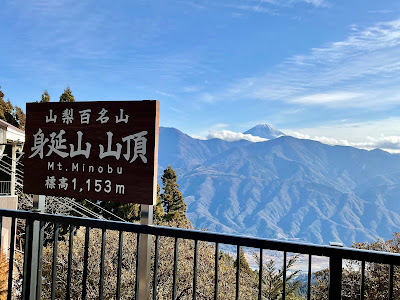Pages
- Home
- Kumano Kodo Trip
- Japanese Festivals
- Japanese Castles
- Stitching Finishes 2025
- Stitching Finishes 2024
- Stitching Finishes 2022
- Stitching Finishes 2021
- Stitching Finishes 2020
- Finish It in 2019
- Stitching Finishes 2018
- Stitching Finishes 2017
- Stitching Finishes 2016
- Stitching Finishes 2015
- Stitching Finishes 2014
- Stitching Finishes 2013
- Stitching Finishes 2012
- Smalls Stitch A Long 2018 - 2019
- Smalls Stitch A Long 2014 - 2017
- 6 & 6 in 2018
- 17 in 2017
- Take A Stitch Tuesday
- English Paper Piecing Projects
Wednesday, January 31, 2024
Tuesday, January 30, 2024
Taxi and Bus Driver Tests to be Offered in More Languages
Currently there is a huge shortage of drivers in many types of jobs in Japan. The biggest shortage is in passenger carrying drivers. As a result, bus companies are reducing service and cancelling routes. My students tell me it is very difficult to find a taxi after a night of drinking parties. (It is illegal to drive after consuming any amount of alcohol, so if you drink, you cannot drive yourself home).
The Japanese government plans to offer drivers license tests in up to twenty languages, including English, Chinese, and Vietnamese, in addition to possibly adding taxi and bus drivers to the list of occupations which qualify for "specified skilled worker" visas, as the transportation sector struggles with a large labor shortage.
Regular drivers licenses tests already come in different languages. The Class 2 commercial license tests, which are required for transporting passengers, are currently only offered in Japanese. The written component of the test is very difficult for non-Japanese residents.
This seems to be a good solution to the problems. We will have to wait and see what happens.
Monday, January 29, 2024
Sunday, January 28, 2024
Saturday, January 27, 2024
Mt. Minobu Kuonji Temple
This was a gorgeous day in late December and an amazing place to visit. There are a lot of pictures here, but these are a fraction of all the ones I took that day! Check out this website to find out all about this place. I've included some information from that site here, but if you are interested in this place, it would be best if you checked out the link.
I took two trains and a bus, then there was a lot of walking and a cable car and more walking.
The Sanmon Gate is considered the main gate to Kuonji Temple. It was first built in 1642 and has been rebuilt three times due to fire damage over the years. A major renovation was completed in 1907.
The massive gate stands 21 meters high and 23 meters wide. It is one of the three largest gates in Japan’s Kanto region.
Temple gates with three openings (Sanmon) are also referred to as gates of the “three liberations.” Each of the three openings in the gate represents one of these liberations: kumon (emptiness), musomon (formlessness), and muganmon (inaction). It is said that passing through the Sanmon Gate can rid the believer of the three human afflictions: greed, anger, and foolishness.
Bodaitei Stairway - 287 steps
Just beyond the Sanmon Gate is an ancient staircase built in 1652. The stairway is called the Bodaitei, which means “stairway to enlightenment.” It has 287 steps, and reaches a height of 104 meters.
In 1632, a Nichiren follower named Nizo arrived at Kuonji Temple with his mother. At the time, there was no staircase leading up the slope, so Nizo had to carry his elderly mother on his back to reach the temple. At the sanctuary, Nizo prayed for the means to build a stairway to make the pilgrimage easier for Nichiren devotees. It is said that Nizo was able to save enough money from his job as a fisherman and hoped to eventually return to Kuonji and build the Bodaitei. However, while on his way to Kuonji the second time, Nizo saw many people in Fujikawa suffering from famine. He believed that the lives of others, even strangers, were more important, so he gave them the money he had saved for the stairway.
Nizo returned to his home on Sado Island and went to work again to save money. After some time, he returned to Kuonji and erected a sign offering his hard-earned money for materials and labor to help build the Bodaitei. Soon, huge crowds of people gathered to help Nizo build the staircase, many grateful to be able to earn a small income and help contribute to the experience of visiting Kuonji.
At the top of the steps is the Five Storied Pagoda
This five-storied pagoda is one of the most distinctive landmarks on Mt. Minobu. It was originally built in 1619 and once stood on the east side of Kuonji Temple. It was built by Jufukuin (1570–1631), the mother of Maeda Toshitsune, third lord of the Kaga domain (in present-day Ishikawa prefecture). At the time, this pagoda was the second tallest in Japan. It unfortunately burned down twice, once in 1829 and again in 1875.
During the Heisei era (1989–2019), the process began to rebuild the pagoda once again. Architects hoped to accurately replicate its original form. By studying its ruins, they determined the dimensions of the original. They also studied other pagodas in Japan that were built by the same original architect. In 2009, it was completed, and is now the fourth tallest pagoda in Japan, at a height of 39 meters. It is made from the wood of 400-year-old trees felled from forests on Mt. Minobu and is painted with red iron-oxide paint.










































































































